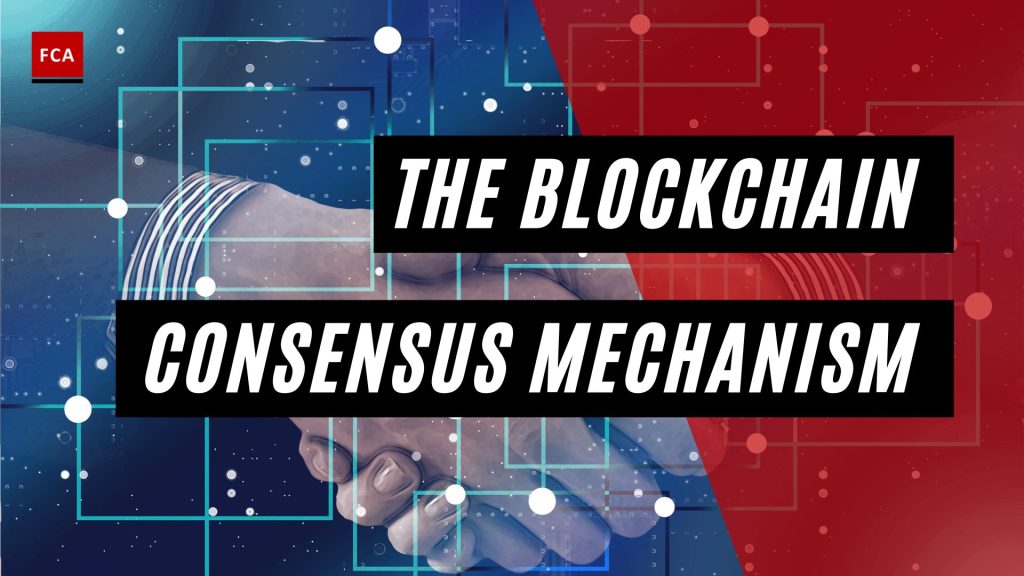The blockchain consensus mechanism is a central element of the blockchain security and can take many different forms. In principle, any node within a blockchain network can propose the addition of new information to the blockchain. To validate whether this addition of information is legitimate, the nodes have to reach some form of agreement. Here a “consensus mechanism” comes into play.
A consensus mechanism is a predefined specific, cryptographic validation method that ensures a correct sequencing of transactions on the blockchain. In the case of cryptocurrencies, such sequencing is required to address the issue of double-spending. Double-spending is when the same payment instrument or asset can be transferred more than once and would happen if transfers were not registered or controlled.

Understanding the Blockchain Consensus Mechanism
A consensus mechanism can be structured in some ways. In the context of cryptocurrencies, there are two predominant consensus mechanisms, which are the Proof of Work mechanism and the Proof of Stake mechanism.
First, what is the Proof of Work mechanism? In this kind of system, network participants have to solve so-called “cryptographic puzzles” to be allowed to add new “blocks” to the blockchain. This puzzle-solving process is commonly referred to as “mining”. In simple terms, these cryptographic puzzles are made up of all information previously recorded on the blockchain and a new set of transactions to be added to the next “block”. The input of each puzzle becomes larger over time, resulting in a more complex calculation. The PoW mechanism, therefore, requires a vast amount of computing resources, which consume a significant amount of electricity.
If a network participant solves a cryptographic puzzle, it proves that he has completed the work, and is rewarded with a digital form of value – or in the case of a cryptocurrency, with a newly minted coin. This reward serves as an incentive to uphold the network.
The cryptocurrency Bitcoin is based on a PoW consensus mechanism. Other examples include Litecoin, Bitcoin Cash, Monero, and others.
Next is the Proof of Stake mechanism. In this kind of system, a node as a transaction validator must prove ownership of a certain asset to participate in the validation of transactions. In the case of cryptocurrencies, this would require a certain amount of coins. This act of validating transactions is called “forging” instead of “mining”. For example, in the case of cryptocurrencies, a transaction validator will have to prove his “stake” of all coins in existence to be allowed to validate a transaction.

Depending on how many coins he holds, he will have a higher chance of being the one to validate the next block. This has to do with the assumption that he may have greater seniority within the network earning him a more trusted position. The transaction validator is paid a transaction fee for his validation services by the transacting parties. Cryptocurrencies such as Neo and Ada utilize a PoS consensus mechanism.
The PoW and PoS mechanisms are far from the only consensus mechanisms currently in existence. Other examples include proof of service, proof of elapsed time, and proof of capacity. Many other consensus mechanisms are probably developed in this very second all over the world. Eventually, they will emerge and become part of a new cryptocurrency.
Final Thoughts
The consensus mechanism is a crucial aspect of the blockchain technology that ensures the integrity and security of the network. The blockchain consensus mechanism is responsible for ensuring that all the nodes on the network agree on the validity of the transactions and the state of the network. There are several consensus mechanisms used in the blockchain, including Proof of Work (PoW), Proof of Stake (PoS), Delegated Proof of Stake (DPoS), and Practical Byzantine Fault Tolerance (PBFT). Each of these mechanisms has its unique features, advantages, and disadvantages, and the choice of the consensus mechanism depends on the specific requirements of the blockchain network.









